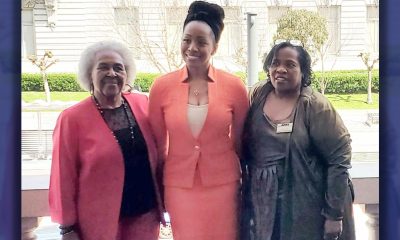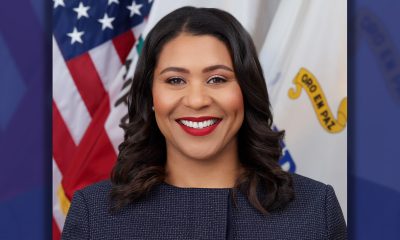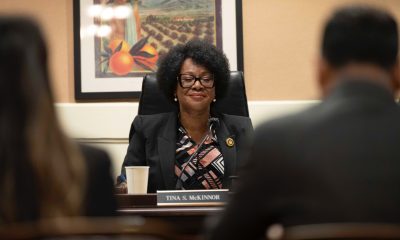Coronavirus
Larry Elder Fails to Make List of Candidates in Gov. Recall Race
Elder formally launched his campaign to recall Newsom outside the Los Angeles County Registrar-Recorder/County Clerk office.
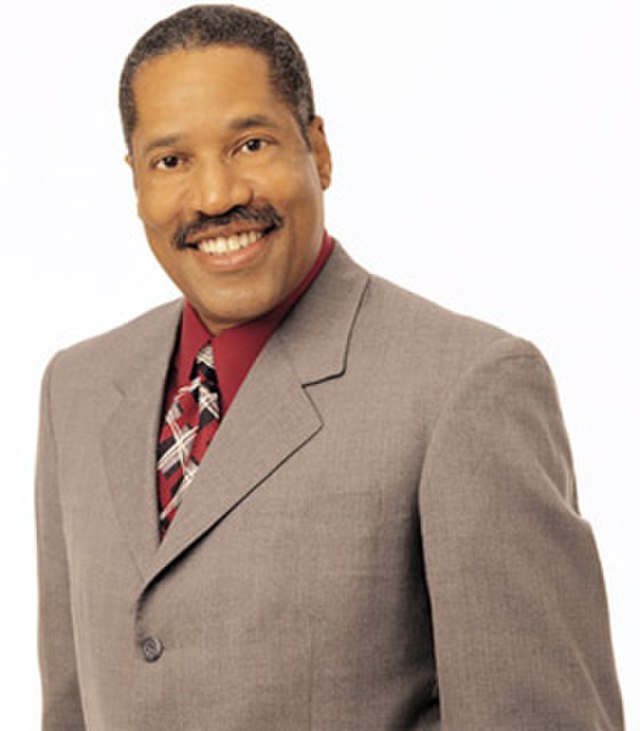
On July 17, California elections officials announced 41 candidates had filed the required paperwork to appear on the ballot September 14 in the election to recall and replace current California Gov. Gavin Newsom. Of those, 21 of them are running as Republicans.
But Larry Elder, the most prominent African American vying to replace Newsom, is not on the official list of candidates, according to state officials.
The Los Angeles-based, nationally syndicated conservative radio talk show host and newspaper columnist, who announced his candidacy for California governor July 12 will not be among those that California Secretary of State Shirley N. Weber is expected to certify next week.
However, Ying Ma, a campaign spokesperson for Elder, said she expects Elder to be on the final list of certified candidates.
“Our campaign submitted every document required by the Secretary of State and the Los Angeles County Registrar,” she said in a statement Saturday.
Elder is among 70-plus candidates who have announced that they are vying to unseat Newsom, including former Olympian Caitlyn (Bruce) Jenner, former San Diego Mayor Kevin Faulconer, former U.S. Congressman Doug Ose and 2018 GOP gubernatorial nominee John Cox.
Elder formally launched his campaign to recall Newsom outside the Los Angeles County Registrar-Recorder/County Clerk office.
“I’m running for governor because the decline of California isn’t the fault of its people,” he said. “Our government is what’s ruining the Golden State. Our schools are closed to both students and their parents. Our streets aren’t safe from rising violent crime or the disaster of rising homelessness. And the scandals of Sacramento aren’t going to stop on their own. It’s time to tell the truth. We’ve got a state to save.”
Since filing his candidacy, Elder has been using social media platforms to express his views on homelessness in California, education, and the city of Los Angeles’ mandate to wear face masks indoors, including for individuals who are fully vaccinated.
“As Gov, I will not tell, much less order, people to wear masks. I will not falsely claim that mask-wearing protects kids. The reason I wore a mask when I signed the application to run is that Newsom will not allow entry into that govt building without one,” Elder posted to his Twitter account July 14.
On July 16, he followed with another tweet, “If Gavin Newsom had sense or spine he would reverse LA’s mask order, which flies against both CA and CDC rules. He has the power to free LA residents of this madness. When I’m governor, there will be NO mask mandates at state or local level in California.”
Elder, 69, was born and raised in South Central Los Angeles. His father, who served in the United States Marine Corps during World War II, moved to California from Georgia and opened a restaurant — Elder’s Snack Bar.
Elder’s mother, who was once a clerical worker for the U.S. Department of War (now the U.S. Department of Defense), raised three boys as a stay-at-home mom.
Elder earned a Bachelor of Arts degree in Political Science from Brown University in Rhode Island and a Juris Doctorate from the University of Michigan School of Law. His daily radio program, “The Larry Elder Show,” is heard every weekday in all 50 states, on more than 300 stations, according to his campaign website.
Newsom backers have blasted the recall effort as a Republican attempt to steal an election they cannot legitimately win.
“This recall is a partisan power grab – nothing more, nothing less — a cynical attempt by national Republicans to force an election, and to try to seize control in California,” said U.S. Sen. Alex Padilla, former California Secretary of State and the state’s first Latino U.S. Senator. “This Republican recall effort is powered by the same forces who still refuse to accept the results of the presidential election in 2020. They are pushing voter suppression efforts in statehouse after statehouse across the country.”
Editor-in-chief note: On July 21, Superior Court Judge Laurie M. Earl ruled: “I don’t find that Mr. Elder was required to file tax returns at all.” That was because the September 14 election is considered a special contest rather than a direct primary. Elder tweeted “Victory! My next one will be on Sept. 14 at the ballot box.”
California Black Media
Gov. Newsom and Gov. DeSantis Go Head-to-Head in Nationally Televised Debate
Conservative Fox News personality Sean Hannity moderated the duel, during which the TV pundit, more than once, injected his opinion, and appeared to be providing subtle assists to DeSantis. As the debate progressed, it was clear that opinions about each topic discussed was representative of the philosophical and political chasm that divides liberal and conservative America, and a preview of campaign mudslinging that is bound to intensify as the 2024 presidential campaign ensues.
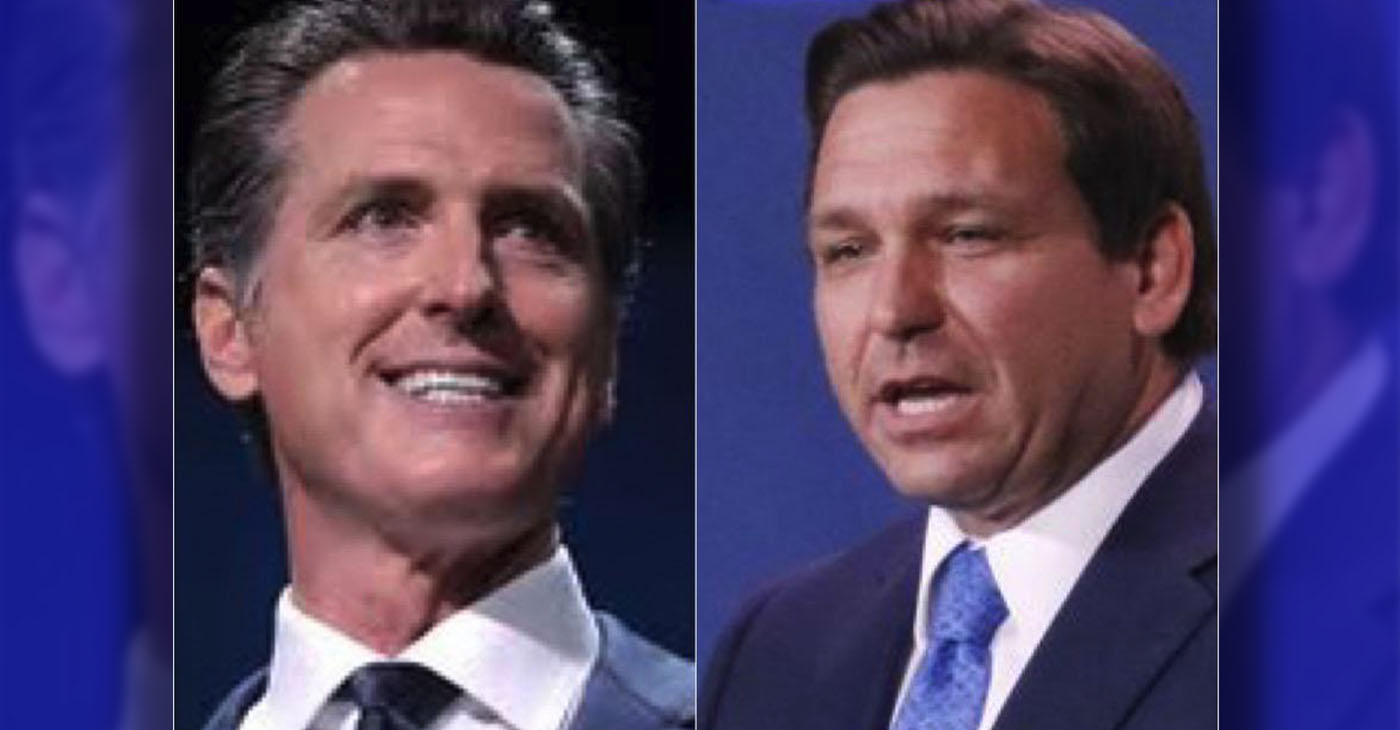
By California Black Media
In an intense, 95-minute-plus televised faceoff between California Gov. Gavin Newsom and Florida Gov. Ron DeSantis on Nov. 30, the men traded jabs and putdowns, defended their respective gubernatorial records, disagreed sharply on how to solve the country’s most pressing problems, and expressed clashing views on the performance of the Biden-Harris administration.
Conservative Fox News personality Sean Hannity moderated the duel, during which the TV pundit, more than once, injected his opinion, and appeared to be providing subtle assists to DeSantis.
As the debate progressed, it was clear that opinions about each topic discussed was representative of the philosophical and political chasm that divides liberal and conservative America, and a preview of campaign mudslinging that is bound to intensify as the 2024 presidential campaign ensues.
“I’ll tell you why I’m here,” Newsom said. “I’m here to tell the truth about the Biden-Harris record and also compare and contrast Ron DeSantis’ record and the Republican Party’s record” with that of California.
DeSantis blasted Newsom’s management of the COVID-19 crisis and criticized Newsom for prevalent crime, homelessness and deteriorating social conditions in California cities.
“You have the freedom to defecate in public in California,” DeSantis said. “You have the freedom to pitch a tent on Sunset Boulevard. You have the freedom to create a homeless encampment under a freeway and even light it on fire. They’re not the freedoms our founding fathers envisioned.”
Newsom took a jab at DeSantis’ presidential candidacy, predicting that the Florida Governor would be endorsing GOP frontrunner Donald Trump soon.
“There’s one thing we have in common,” Newsom said. “Neither of us will be the nominee for our party in 2024.
BayCityNews
FDA Updates Approval of Pfizer Booster Vaccine for Children Under 5
The U.S. Food and Drug Administration updated its approval Tuesday of the Pfizer-BioNTech booster vaccine, making it available to some children under age 5. Before this update, children under 5 were not eligible for COVID-19 booster shots. Instead, they received three doses of the regular vaccine.
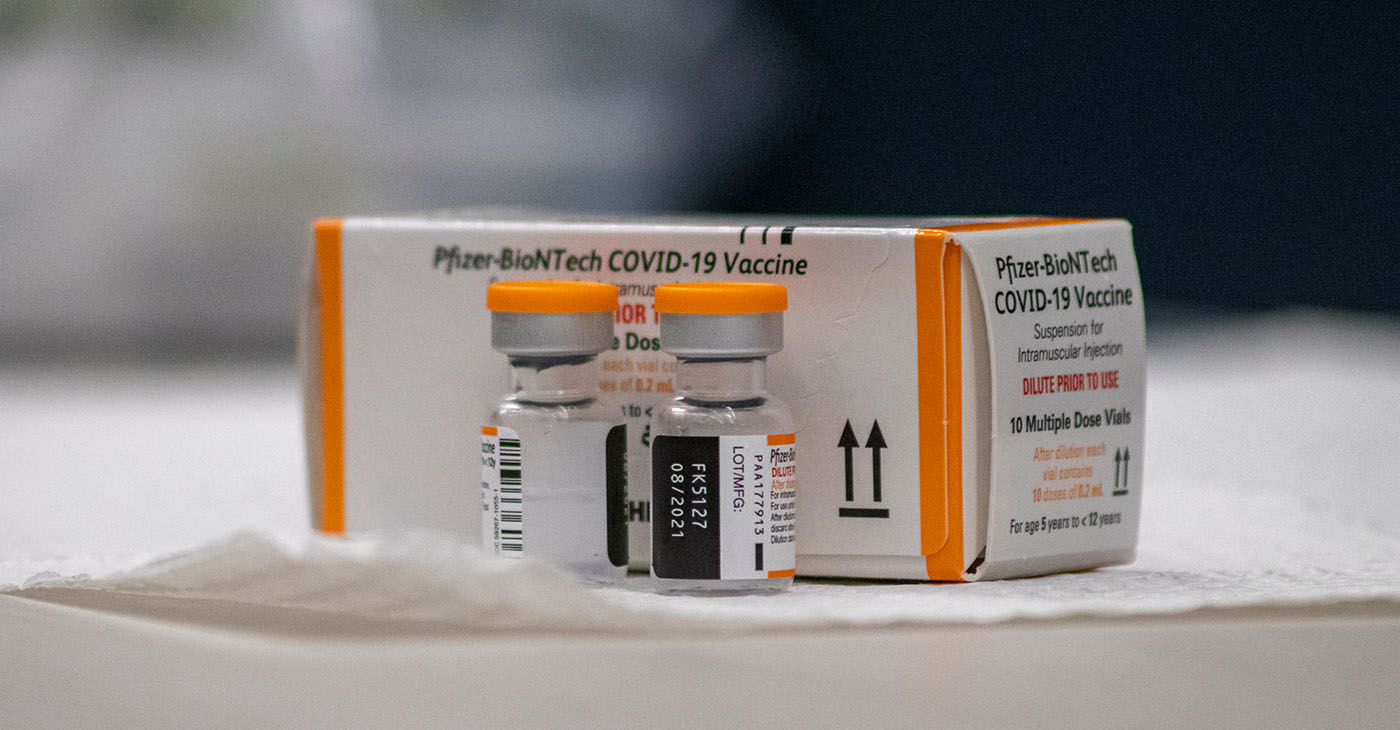
By Eli Walsh
Bay City News
The U.S. Food and Drug Administration updated its approval Tuesday of the Pfizer-BioNTech booster vaccine, making it available to some children under age 5.
Before this update, children under 5 were not eligible for COVID-19 booster shots. Instead, they received three doses of the regular vaccine.
As of December 2022, children age 4 and younger who have not been vaccinated receive the omicron variant-specific booster vaccine as the third dose in their primary vaccine series, following two doses of the original Pfizer vaccine.
However, children in that age range who completed their initial vaccination series before December 2022 only received three doses of the original Pfizer vaccine, and are less protected against more infectious variants of the virus as a result.
FDA officials updated the vaccine’s emergency use authorization Tuesday to allow those children who only received the original Pfizer COVID vaccine to receive one dose of the bivalent booster if it has been at least two months since they completed their initial series.
Other children under age 5 are not eligible for the booster, although everyone age 5 and up is eligible for a booster.
“Currently available data show that vaccination remains the best defense against severe disease, hospitalization and death caused by COVID-19 across all age groups, and we encourage all eligible individuals to make sure that their vaccinations are up to date with a bivalent COVID-19 vaccine,” said Dr. Peter Marks, the director of the FDA’s Center for Biologics Evaluation and Research.
Clinical data has found that both the original Pfizer vaccine and the booster vaccine that targets the omicron subvariants BA.4 and BA.5 are safe for everyone aged 6 months and up and effective at preventing the worst outcomes of COVID infection, including serious illness and death.
COVID vaccines are available at primary care providers, retail pharmacies and some facilities operated by local health departments.
Copyright © 2023 Bay City News, Inc. All rights reserved. Republication, rebroadcast or redistribution without the express written consent of Bay City News, Inc. is prohibited. Bay City News is a 24/7 news service covering the greater Bay Area.
Bay Area
COVID-19 Response Grant Program
The City of Union City will be issuing another round of its COVID-19 Response Grant Program. The program has distributed approximately $620,000 in grant funds and forgivable loans to the community to respond to the impacts of COVID-19 and will distribute another $322,000 through this latest round of funding. The City will utilize federal Community Development Block Grant (CDBG) and CARES Act funds.

The City of Union City will be issuing another round of its COVID-19 Response Grant Program. The program has distributed approximately $620,000 in grant funds and forgivable loans to the community to respond to the impacts of COVID-19 and will distribute another $322,000 through this latest round of funding. The City will utilize federal Community Development Block Grant (CDBG) and CARES Act funds.
Grants are available through the City’s Road to Recovery Small Business Assistance Program and the Residential Rental Assistance Program. The City began accepting applications on March 6, 2023, at 9 a.m. and will begin reviewing applications (up to 50 applications for each grant opportunity) submitted on or before March 30, 2023, at 5 p.m. The program information and the online application are available on the City’s website:
https://www.unioncity.org/548/COVID-19-Response-Grant-Program
The City will be holding two informational/technical assistance meetings to support residents and businesses with their applications and respond to any questions. These meetings will be streamed via Zoom. See below for meeting information and Zoom meeting links.
Tuesday, March 14, 2023: 9 a.m. to 10 a.m.
https://unioncity-org.zoom.us/j/89061570160
Wednesday, March 15, 2023: 12 p.m. to 1 p.m.
-

 Activism4 weeks ago
Activism4 weeks agoOakland Post: Week of March 27 – April 2, 2024
-

 #NNPA BlackPress4 weeks ago
#NNPA BlackPress4 weeks agoCOMMENTARY: D.C. Crime Bill Fails to Address Root Causes of Violence and Incarceration
-

 #NNPA BlackPress4 weeks ago
#NNPA BlackPress4 weeks agoMayor, City Council President React to May 31 Closing of Birmingham-Southern College
-

 #NNPA BlackPress4 weeks ago
#NNPA BlackPress4 weeks agoBeloved Actor and Activist Louis Cameron Gossett Jr. Dies at 87
-

 Community1 week ago
Community1 week agoFinancial Assistance Bill for Descendants of Enslaved Persons to Help Them Purchase, Own, or Maintain a Home
-

 Activism3 weeks ago
Activism3 weeks agoOakland Post: Week of April 3 – 6, 2024
-

 Business1 week ago
Business1 week agoV.P. Kamala Harris: Americans With Criminal Records Will Soon Be Eligible for SBA Loans
-

 Activism2 weeks ago
Activism2 weeks agoOakland Post: Week of April 10 – 16, 2024

